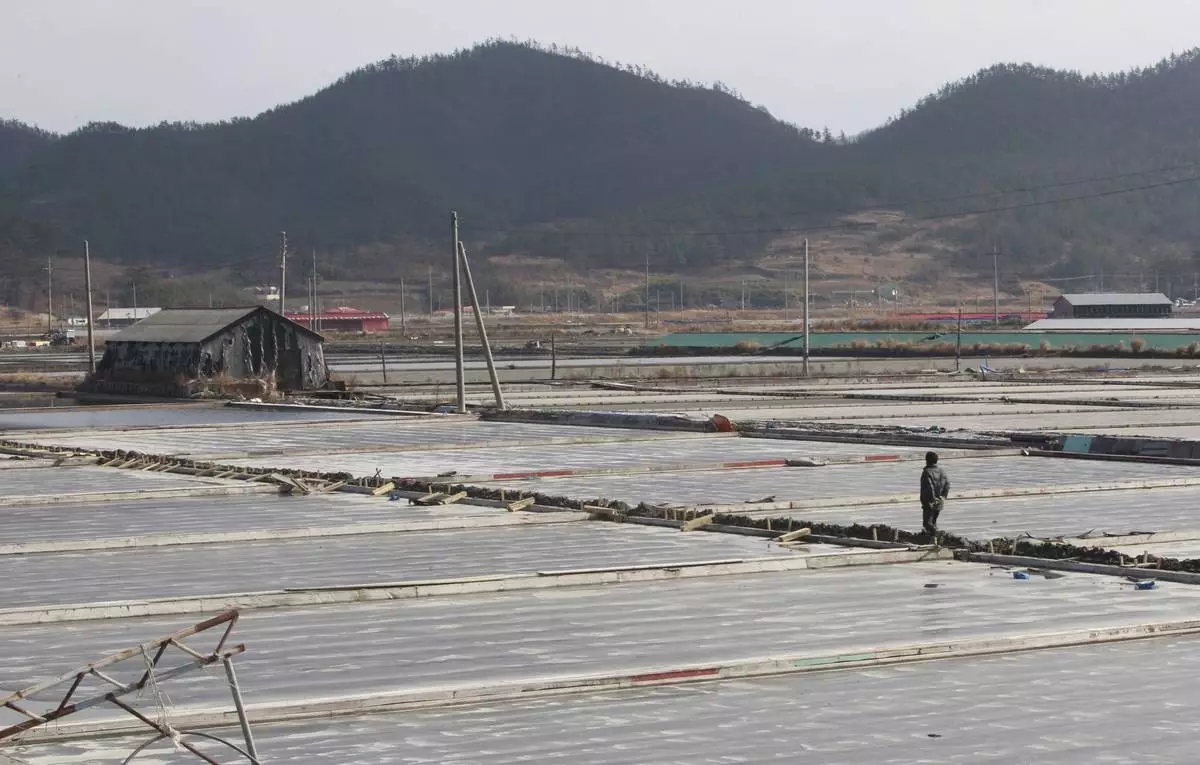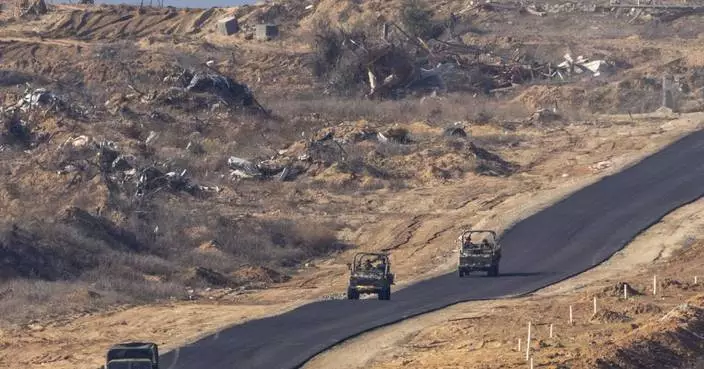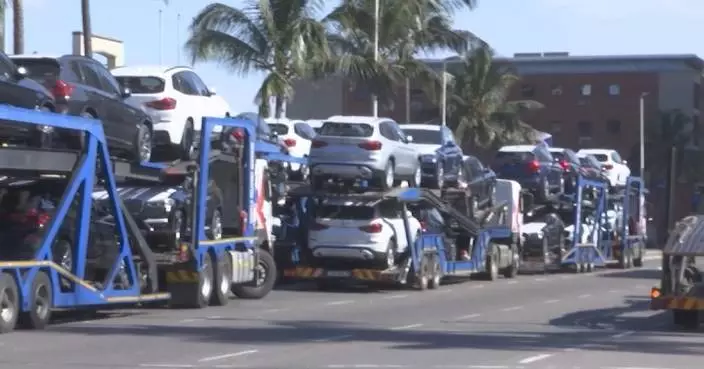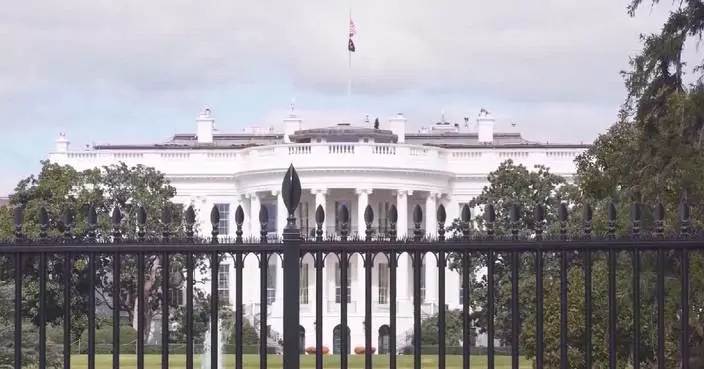SAN JOSE, Calif. (AP) — NHL leading goal scorer Leon Draisaitl left the Edmonton Oilers' game against the San Jose Sharks on Thursday night in the second period with an undisclosed injury and didn't return.
Draisaitl appeared to get hurt midway through the second period and skated gingerly to the bench before leaving to go to the dressing room. Coach Kris Knoblauch said after the game that he had no update on the severity of the injury.
Jeff Skinner scored the tiebreaking goal shortly after Draisaitl left the game, giving the Oilers a 3-2 victory that kept them within two points of Los Angeles in the race for second place in the Pacific Division and home-ice advantage in the first round of the playoffs.
“Obviously we’ve had some injuries to key guys,” Skinner said. “It’s a lot of opportunity for other guys to step up and I think guys have done a good job so far. We’re going to have to continue that and keep working together to get the results we want.”
Draisaitl had an assist earlier in the second period. He leads the NHL with 52 goals and is third in the league with 106 points.
Draisaitl missed four games last month with an undisclosed injury.
The Oilers are already without star center Connor McDavid, who has been sidelined since colliding with Winnipeg's Josh Morrissey on March 20. McDavid has resumed skating with the team in a non-contact jersey but there is no timetable for his return.
The playoffs begin in just over two weeks.
“You never want to miss those guys,” Knoblauch said. “You never want your top players not to play because every time they’re not in, it decreases your chances of winning because they are good players, obviously. But what happens is other guys have some opportunities to play, get some confidence, hopefully score some goals, because we’re going to need them.”
AP NHL: https://apnews.com/hub/nhl

Edmonton Oilers left wing Viktor Arvidsson, right, celebrates with center Leon Draisaitl (29) after scoring a goal during the second period of an NHL hockey game against the San Jose Sharks, Thursday, April 3, 2025, in San Jose, Calif. (AP Photo/Godofredo A. Vásquez)
SEOUL. South Korea (AP) — The United States has blocked imports of sea salt products from a major South Korean salt farm accused of using slave labor, becoming the first trade partner to take punitive action against a decadeslong problem on salt farms in remote islands off South Korea’s southwest coast.
U.S. Customs and Border Protection issued a withhold release order against the Taepyung salt farm, saying information “reasonably indicates” the use of forced labor at the company in the island county of Sinan, where most of South Korea’s sea salt products are made.
Under the order issued last Wednesday, Customs personnel at all U.S. ports of entry are required to hold sea salt products sourced from the farm.
Taepyung is the largest salt farm in Sinan, reportedly producing about 16,000 tons of salt annually, which accounts for approximately 6% of the country’s total output, and is a major supplier to South Korean food companies. The farm, located on Jeungdo island in Sinan and leasing most of its salt fields to tenants, has been repeatedly accused of using forced labor, including in 2014 and 2021.
In a statement to The Associated Press on Monday, South Korea’s Foreign Ministry said relevant government agencies, including the Ministry of Oceans and Fisheries, have been taking steps to address labor practices at Taepyung since 2021, and it assesses that none of the salt produced there now is sourced from forced labor. The ministry said it plans to “actively engage” in discussions with the U.S. officials over the matter. The fisheries ministry didn’t immediately comment on the U.S. move.
The widespread slavery at Sinan’s salt farms was exposed in 2014, when dozens of slavery victims — most of them with disabilities — were rescued from the islands following an investigation by mainland police. Some of their stories were documented by The Associated Press, which highlighted how slavery persisted despite the exposure.
U.S. Customs said it identified several signs of forced labor during its investigation of Taepyung, including “abuse of vulnerability, deception, restriction of movement, retention of identity documents, abusive living and working conditions, intimidation and threats, physical violence, debt bondage, withholding of wages, and excessive overtime.”
Lawyer Choi Jung Kyu, part of a group of attorneys and activists who petitioned U.S. Customs to take action against Taepyung and other South Korean salt farms in 2022, expressed hope that the U.S. ban would increase pressure on South Korea to take more effective steps to eliminate the slavery.
“Since the exposure of the problem in 2014, the courts have recognized the legal responsibility of the national government and local governments, but forced labor among salt farm workers has not been eradicated,” Choi said. “Our hope is that the export ban would force companies to strengthen due diligence over supply chains and lead to the elimination of human rights violations.”
Most of the salt farm slaves rescued in 2014 had been lured to the islands to work by brokers hired by salt farm owners, who would beat them into long hours of hard labor and confine them at their houses for years while providing little or no pay.
The slavery was revealed in early 2014 when two police officers from the capital, Seoul, disguised themselves as tourists to clandestinely rescue a victim who had been reported by his family as missing. One of the Seoul police officers told AP they went undercover because of concerns about collaboration between the island’s police and salt farm owners. Dozens of farm owners and job brokers were indicted, but no police or officials were punished despite allegations some knew about the slavery.
In 2019, South Korea’s Supreme Court upheld a lower court ruling that ordered the government to compensate three men who had been enslaved on Sinan’s salt farms, acknowledging that local officials and police failed to properly monitor their living and working conditions.
The salt farm slavery issue resurfaced in 2021 when around a dozen workers at Taepyung were discovered to have endured various labor abuses, including forced labor and wage theft.

FILE - A salt farm owner walks around his salt farm on Sinui Island, South Korea, Feb. 19, 2014. (AP Photo/Ahn Young-joon, File)


















































